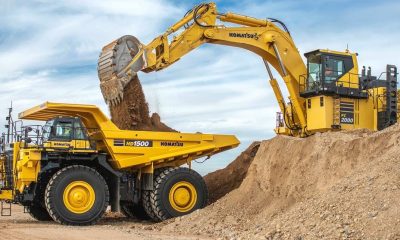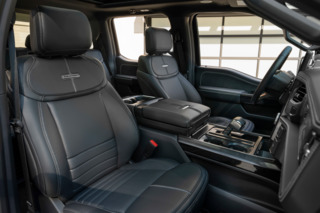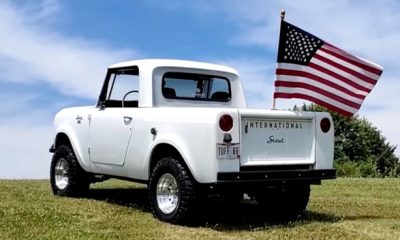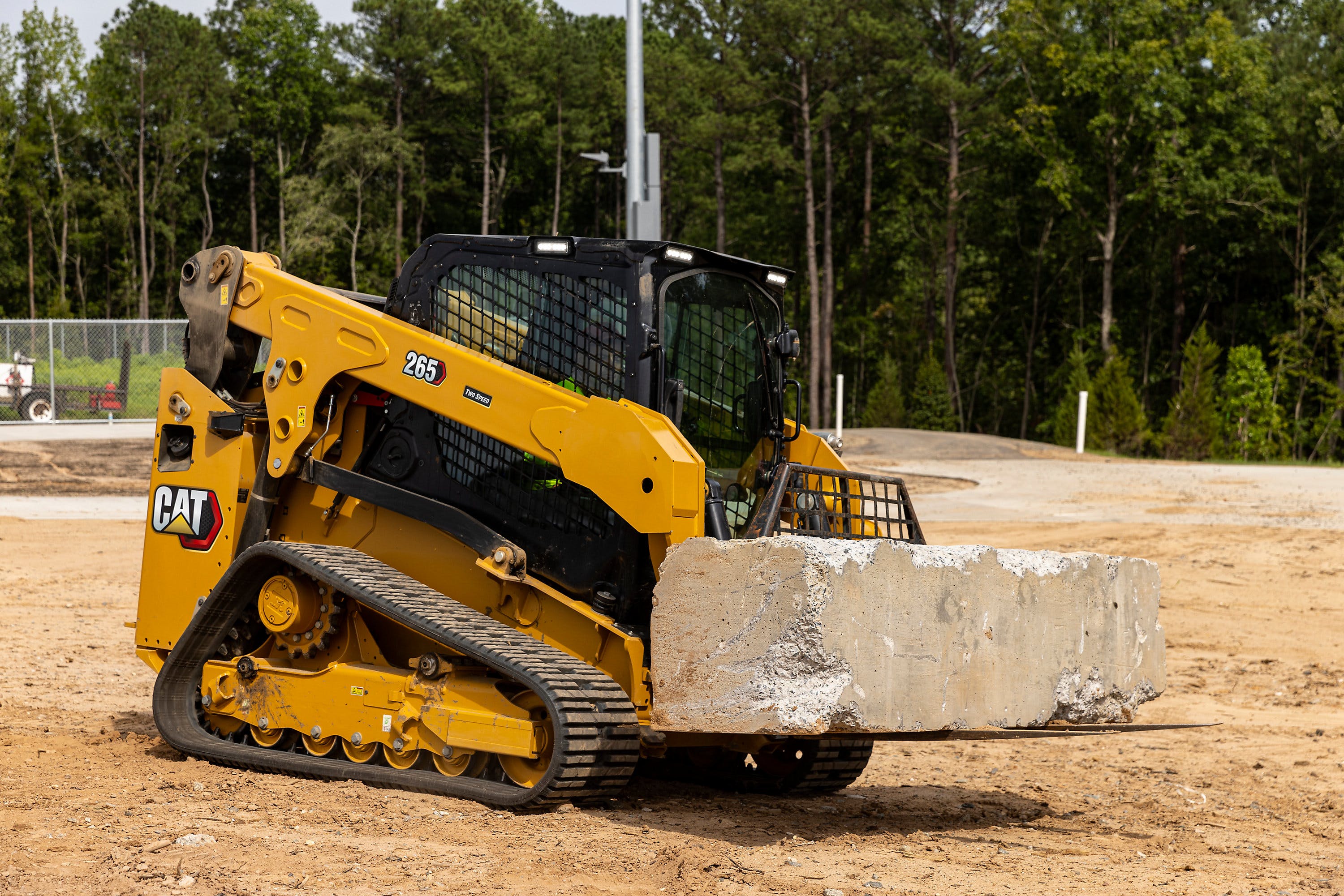The Ford F-150 Lightning has the potential to be your best pickup yet, and for some willing to operate within certain boundaries, that may already be the case.
But for others accustomed to mostly using a pickup’s capabilities over long distances on a tight timeframe, the truck can prove to be a risky – and admittedly exciting – exercise in extremes.
First up, Lightning is the quickest truck I’ve ever driven, and it will tow on an incline with ease. It’s the least expensive truck I’ve ever fueled, and it ranks as one of the most comfortable rides, particularly when towing.
Maintenance also promises to be a lot less costly than internal combustion, with the first checkup coming at 10,000 miles.
“While we obviously don’t need oil changes, other actions should be performed such as lube joints, check wipers, cooling and braking systems inspection, tire rotation and over software system diagnostics,” said Vince Mahe, Ford’s chief engineer for Lightning.
After spending a thousand miles with Lightning, we learned that the truck does come with a sizable learning curve, particularly around range and charging. (Ever spent 45 minutes filling up a pickup? Neither have we. That’s another story.) And while all-electric trucks can be really impressive with instant torque and cheap fill-ups, they can also prove concerning and disappointing if you venture out of their comfort zone and yours.
If you’re a numbers person – and who in the fleet world isn’t? – Lightning can shine, take a mysterious nose dive, and then emerge shining again. What other pickup allows you to fill up a half-empty tank for $8.50? On the other hand, what other pickup suddenly loses a big chunk of range when traveling down the highway? And then at other times inexplicably adds it back?
That was my first and most important lesson. Lightning requires a fresh perspective on energy use and some faith in some odd behind-the-scenes math.
What happened to my range?
Ah, an 800-mile road trip. What better way to get familiar with Lightning than to take it on a trip through Florida, which according to the Department of Energy is second to California in terms of EV adoption.
With nearly 100,000 registered EVs in the Sunshine State, we thought there would be plenty of chargers to handle Lightning and thus eliminate dreaded range anxiety.
But what would Lightning’s route planner have to say? After typing in the Orlando address on that impressive 15.5-inch center console screen, the truck provided three options for getting to the world’s playground from Panama City. I chose to travel by Interstates 10 and 75. The truck showed our first charger stop in Gainesville at an Electrify America station. (Station may be the wrong word. It’s more like a group of chargers on the far side of a Target parking lot.)
On a cool and sunny 65-degree morning, we hit the highway, and it wasn’t long after that the first pang of range anxiety struck.
About 14 miles into the trip, range mysteriously dropped from 267 to 243 miles, a loss of 24 miles. Ten miles just vanished from the screen while traveling the speed limit on a flat Florida highway. Poof! Gone.
 Each trip provides a summary of where your power’s going. Not sure if the novelty ever wears off but it’s interesting to see how you can get more energy to driving by scaling back on HVAC and accessories like stereo use and phone charging.Tom QuimbyRange continued to drop at an uncomfortable pace, so much so that when we reached Interstate 10, the display showed that we would end up with only 24 miles of range when we reached Gainesville. With an advertised max range of 320 miles, that’s not even the equivalent of an 1/8th of a tank of fuel. That’s more like 1/16th. I didn’t want to risk it, so I opted to stop in Tallahassee to charge.
Each trip provides a summary of where your power’s going. Not sure if the novelty ever wears off but it’s interesting to see how you can get more energy to driving by scaling back on HVAC and accessories like stereo use and phone charging.Tom QuimbyRange continued to drop at an uncomfortable pace, so much so that when we reached Interstate 10, the display showed that we would end up with only 24 miles of range when we reached Gainesville. With an advertised max range of 320 miles, that’s not even the equivalent of an 1/8th of a tank of fuel. That’s more like 1/16th. I didn’t want to risk it, so I opted to stop in Tallahassee to charge.
This is where Lightning’s mystery math comes in. Most of us are accustomed to losing fuel economy owed to payload, towing and driving habits. With EVs, it’s that and more. For instance, I wasn’t towing and I wasn’t hauling anything in the bed when Lightning’s range began dropping faster than anticipated.
Ford explained later that Lightning leans on averaging when it comes to determining range. In this case, the day before I had racked up about 20 miles of stop-and-go city driving. Stop-and-go driving provides a lot of brake regen moments to help charge the battery (the extended range 131kWh version in this case); whereas, highway driving does not. In that way, EVs are like hybrids in that they perform best in stop-and-go traffic.
When we started that 101-mile trip to Tallahassee, the 267 miles of range showing on Lighting’s driver-side display had been impacted by prior trips including mine. Plus, those other drivers before me that had racked up 7,000 miles on the truck before I got it had probably done their share of blazing fast zero-to-60 times along with a mix of highway and city driving. Some of them may have tried hypermiling like me. Regardless, that still doesn’t explain the 10-mile range drop, which actually got worse.
After stopping for our first charging session in Tallahassee, range dropped from 267 to 126 miles, a loss of 141 range miles for a 101-mile trip. Where’d that 40 miles go? Good question.
Using Lightning’s route planner, the truck knew that save for a few miles of city traffic, I would be traveling mostly on highway, yet the range remained at 267 miles when we began the first leg of that roughly 800-mile trip. The temperature didn’t suddenly change to extremely hot or cold where the battery pack would have been impacted. That first leg started at 65 degrees Fahrenheit and reached the mid-70s by noon in Tallahassee.
Towing range
Really, a more alarming range drop occurred while towing the Kubota tractor, a 7,000-pound load. Granted, before starting the 50-mile trip, a message had popped up on the screen advising that a range recalculation could occur along the way, and it did in a big way.
 Reclaiming our range proved to be an ongoing and interesting theme. This Electrify America DC fast-charger in Tallahassee, Fla. got us up to 283 miles following a max 90% charge. More on charging in the next story.Tom QuimbyBefore starting out on that first 25-mile leg, range was at 164 miles. This was after inputting dimensions of the trailer and its 10,000-pound GVWR rating, which took the original 288 miles of range down to 164 for a loss of 124 miles. I’ve lost half my fuel economy while towing with internal combustion pickups, so that wasn’t a surprise. This was actually a little better.
Reclaiming our range proved to be an ongoing and interesting theme. This Electrify America DC fast-charger in Tallahassee, Fla. got us up to 283 miles following a max 90% charge. More on charging in the next story.Tom QuimbyBefore starting out on that first 25-mile leg, range was at 164 miles. This was after inputting dimensions of the trailer and its 10,000-pound GVWR rating, which took the original 288 miles of range down to 164 for a loss of 124 miles. I’ve lost half my fuel economy while towing with internal combustion pickups, so that wasn’t a surprise. This was actually a little better.
However, after seven miles into the trip, Lightning’s math went to work again, and we ended up with 115 miles to empty. Whoa! Now that was a surprise – really more of a jaw-dropping “What the heck just happened?” After all, we had been traveling at the speed limit. It was like 70 degrees out. Topography? Flat as a pancake. HVAC? Turned off to help save miles, yet we lost an additional 27% of range following that initial 43% loss after inputting trailer data back at the house. Staggering. I reached out to Ford for help on the important topic of range recalculation.
“There are a lot of factors that impact range especially while towing,” said Vince Mahe, chief engineer for Lightning. “The five key factors to consider are your speed, your trailer’s frontal area and aerodynamics, its weight and the weight of other payload, weather conditions and road grade.”
“The system takes approximately six miles to begin to recalculate your towing range after you’ve entered trailer’s details and the system begins taking in information as you drive,” Mahe continued. “In addition, the first time you tow, the initial range drop and learning starts from around 50% of the label range and then learns from there, including comparing to other Lightnings that have towed similar weights and driven similar routes; i.e., it will get more accurate over time.”
What’s also interesting is that it took less range to make the trip back home to complete our 50-mile towing trip. We were showing 98 miles of range left when we reached our halfway point, a large parking lot in Panama City Beach. When we traveled 25 miles back home, remaining range was at 80 miles resulting in a savings of seven miles. But how? Wind wasn’t a factor. The headlights probably played a role since we ran into fog during that first leg of the trip, which automatically turned the lights on. Most of the fog had lifted on the way back, so the headlights weren’t used as much.
On the losing end of range
More times than not, range recalculations did not work in our favor. From Jacksonville to Tallahassee, a trip that added up to 169 road miles actually cost us 205 range miles.
My average speed on the interstate for our entire road trip was about 5 mph over the speed limit. We encountered two major traffic jams, which brought us down to favorable brake regen stop-and-go.
That’s part of the learning curve with Lightning. Range recalculations that mostly do not work in your favor, at least that’s what we discovered during roughly 1,000 miles of driving.
 The driver’s side display shows 140 miles of range remaining and one mile left to the charger. Energy consumption at 1.8 miles per kWh was below our average of 2 mi/kWh. Factors like external temperature, HVAC use, headlights, highway driving, fast driving, etc. can all impact range.Tom QuimbyWe tried hypermiling at times by cutting off the HVAC, but the overall impact was negligible. I kept a closer eye on energy consumption for the 400-mile return trip to Panama City and, according to Lightning’s calculations, climate use cost 3% of overall energy; 90% went to driving; 3% went to accessories like the impressive B&O sound system; and 4% went to external temperature. Four percent is a big number, especially for fleets. Do the math, and 4% of 400 miles adds up to a 16-mile loss. Mahe explained that you can lower losses to external temperatures before heading out on a trip.
The driver’s side display shows 140 miles of range remaining and one mile left to the charger. Energy consumption at 1.8 miles per kWh was below our average of 2 mi/kWh. Factors like external temperature, HVAC use, headlights, highway driving, fast driving, etc. can all impact range.Tom QuimbyWe tried hypermiling at times by cutting off the HVAC, but the overall impact was negligible. I kept a closer eye on energy consumption for the 400-mile return trip to Panama City and, according to Lightning’s calculations, climate use cost 3% of overall energy; 90% went to driving; 3% went to accessories like the impressive B&O sound system; and 4% went to external temperature. Four percent is a big number, especially for fleets. Do the math, and 4% of 400 miles adds up to a 16-mile loss. Mahe explained that you can lower losses to external temperatures before heading out on a trip.
“Preconditioning your F-150 Lightning is the biggest measure a customer should take to help reduce the impact of cold exterior temperatures on range,” he said. “Practicing good driving habits, like not speeding or accelerating like you’re on a drag strip and parking your truck inside a garage whenever possible, certainly helps range efficiency, but those measures impact the driving portion of the power distribution screen.”
Mahe explained that Lightning will work to keep the battery at “room temperature,” which by most definitions ranges from mid-60 to mid-70 degrees Fahrenheit.
“Our cooling strategy is to ensure we stay around there during all driving and charging events,” he said.
While you’re plugged in, your battery energy won’t be impacted while the truck works to keep the battery at an optimal temperature. But when you’re driving, obviously the battery will have to supply the juice to keep itself cozy, which can result in range loss. I never saw the external temperature at less than 2% of battery draw. It mostly stayed at 4%.
As my passenger will attest, range anxiety hit me at times and had me turning off the A/C and cracking the windows to stay cool. As I got more settled in with Lightning’s range math, I got more comfortable and enjoyed the truck more. However, I never got to the point like the guy in the electric Mustang charging next to me in Tallahassee who said he’s learned to trust Ford’s math to get him to a charger even with 1% of battery life remaining. That’s akin to living like a teenager running on fumes and crossing his fingers for the next gas station. No thanks.

 Business5 years ago
Business5 years ago
 Business3 years ago
Business3 years ago
 Tech3 years ago
Tech3 years ago
 Tech2 years ago
Tech2 years ago




















